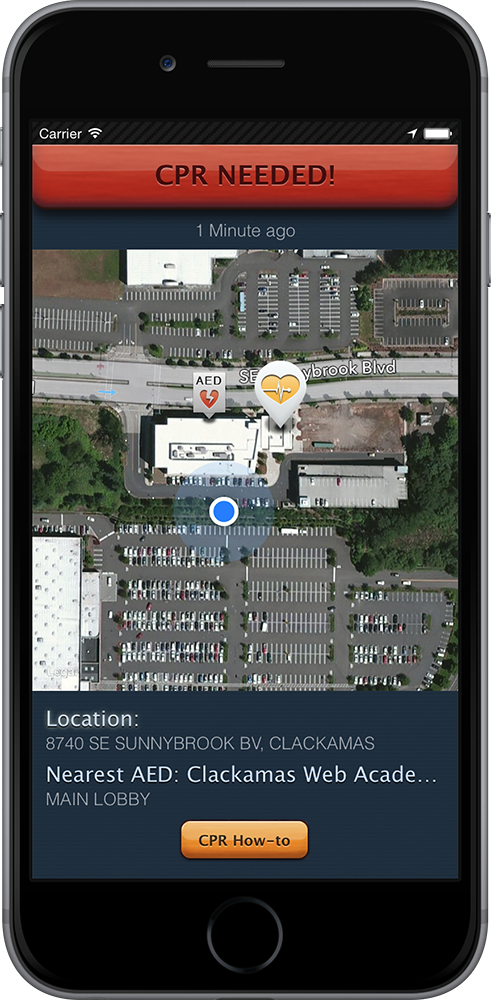Listen
Tucsonan Michael Chaison believes he was minutes from death after he experienced cardiac arrest two years ago. His life-threatening moment came without warning as he refereed a soccer game at Salpointe High School.
“I was not dizzy,” Chaison said. “I did not black out, I did not have shooting pains down my arm or in my neck.”
Fortune came in the form of an automated external defibrillator device, or AED, in place at the school for a moment like the one Chaison experienced.
 VIEW LARGER
VIEW LARGER Physicians and first responders hope a cell phone application called PulsePoint will help ensure information about portable defibrillator devices and medical advice are within reach of anyone who happens upon an emergency. When 911 operators receive a report of cardiac arrest they push a notification to the app, which alerts people who have downloaded the app there is an emergency nearby.
“In Tucson we’ve already done some remarkable things already with chest compression only CPR,” said Dr. Karl Kern, a coronary expert at the University of Arizona’s Sarver Heart Center. “But the real key is to get that applied early, and this has already been proven in other communities, it can really help get early CPR and more bystanders involved.”
PulsePoint focuses on the effective delivery of Cardio Pulmonary Resuscitation. CPR can sustain life by maintaining blood flow to the heart and brain until paramedics arrive. The American Heart Association estimates that CPR, provided immediately after sudden cardiac arrest, can double or triple a person’s chance of survival.
Watch a City of Tucson video of how the app works
The Steven Gootter Foundation in Tucson puts portable defibrillators in fire stations and schools around Southern Arizona. Foundation president Andrew Messing said the PulsePoint app, combined with someone trained in CPR, can make a dramatic difference.
“If the victim is close to you, you can be the first one on the site," said Messing. "The app also tells you where the closest defibrillator is located.”
PulsePoint's effectiveness increases the more people use it.
Michael Chaison said the next time he’s confronted with a heart attack, he might not be the victim. Instead he might be the one called upon to save a life.
“I’m a perfect example that it can happen to any person, at any place, at any time,” Chaison said. “You can be walking in Park Mall, for example, and somebody might start screaming because somebody went down having a heart attack. If you happen to know how to handle a situation through CPR and the use of an AED, this app is absolutely perfect for that situation.”
Advocates say they’re encouraged about PulsePoint’s effectiveness. They add that training is the key, and anyone who learns lifesaving skills must keep up the skills
Studies by the American Heart Association found the memory of CPR skills and knowledge tends to deteriorate as early as three months after training, even among doctors and nurses. Experts remind people downloading the PulsePoint app is the final step in an overall plan to be ready to respond to a cardiac emergency.

By submitting your comments, you hereby give AZPM the right to post your comments and potentially use them in any other form of media operated by this institution.